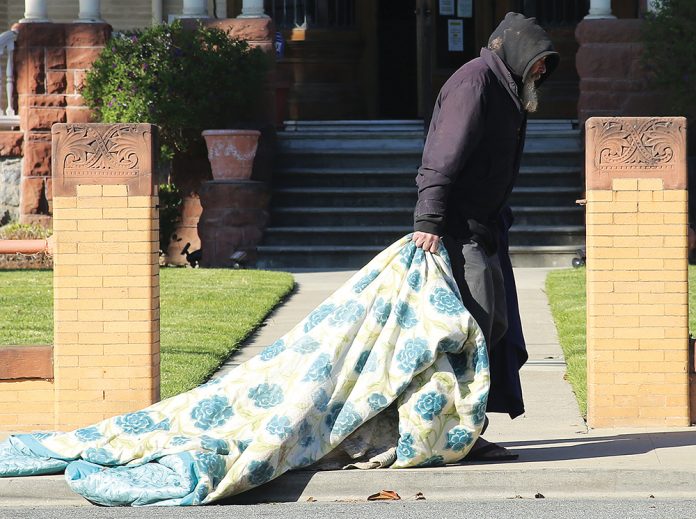
A census of Santa Cruz County’s homeless population taken in February shows a 21.5% decline since the last count in 2021.
Still, one in every 146 Santa Cruz County residents still do not have access to housing, according to the 2023 Homeless Count and Survey, released Aug. 3.
The federally designated Point-in-Time Count provides a snapshot of homelessness in communities throughout the U.S.
“While the numbers show the lowest levels of homelessness since the PIT Count was first conducted and reflects our efforts to prioritize housing, we still have a long way to go,” said Santa Cruz County Housing for Health Director Robert Ratner. “Addressing homelessness in Santa Cruz County requires long-term, systemic change, but we are heading in the right direction.”
Ratner attributes the reduction in part to the millions in federal and state grants and other funding that jurisdictions throughout the state received during the Covid-19 pandemic to help them address homelessness.
Locally, this has meant the creation of the Santa Cruz County Rehousing Wave, and the distribution of more than 600 housing vouchers that were doled out to homeless individuals and families.
Project Homekey and other grants aim to increase the community’s housing capacity, and a recent $10.1 million Behavioral Health Bridge Housing award will help build a 34-unit housing development in Watsonville for homeless adults with behavioral health challenges.
“We’ve been able to use that money to create a bunch of new programs,” Ratner said.
Ratner says that the county has placed 640 people into housing, a number that does not reflect the decline in the homeless population. That’s because statewide, for every one household that moves in there are roughly two or three that have lost their housing, Ratner says.
“People keep losing their housing faster than we are helping them get back into housing,” he said.
Even as the decline from 1,774 to 1,426 is a positive sign for most of the county, the opposite is true for the City of Watsonville, where the homeless population jumped from 175 in 2022 to 322.
That is due largely to the floods that heavily impacted the low-income populations in South County and North Monterey County, in many cases forcing people out of the places they were living.
“A lot of the housing was lost during the floods, and people haven’t been able to come back,” Ratner said. “Programs that were there to help people keep their housing were harder for Hispanic and LatinX population to access.”
More than 40% of the people surveyed identified as Hispanic or Latino, while homelessness among other races was also higher than the general population. More than two-thirds of people experiencing homelessness were male.
Conducted on Feb. 23, the PIT Count shows 79% of people experiencing homelessness at that time were unsheltered. Of those, nearly half slept in vehicles. Sixty-five percent of families experiencing homelessness had shelter, but nearly all unaccompanied minors and transition-age youth (adults less than 24 years old) were living on the streets.
The number of homeless families with children increased, as did the numbers of K-12 students experiencing homelessness.
Nearly half reported substance abuse issues, while more than one-third reported psychiatric/emotional conditions or post-traumatic stress disorder. One-third have a physical disability.
For information, visit housingforhealthpartnership.org.












